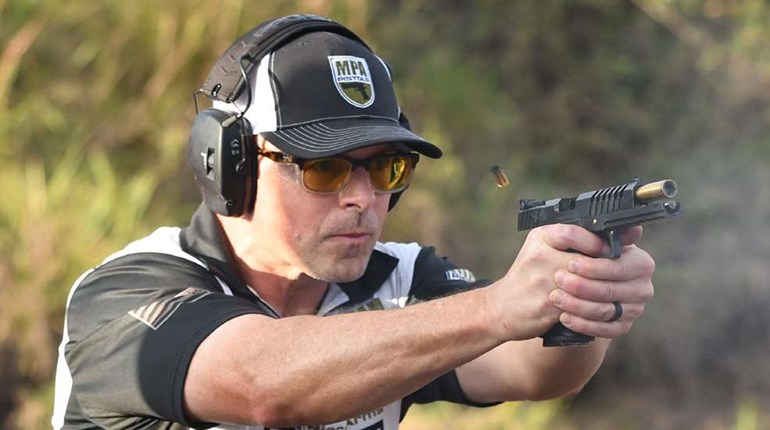
When it comes to target acquisition in shooting bullseye, multi-gun competition, cowboy action, self-defense, etc., with either a rifle or handgun, performance is based on target perspective.
Looking at it from a 30,000-foot vantage point, a target is presented in only one of two environments – a one-way range, such as competition, shooting practice, firearms training class, and the like – or a two-way range where someone is shooting at you in an extremely dynamic environment.
On a one-way range you are in complete control of your environment under calculated duress. You decide when to shoot, at which targets and in what order. You can shoot proactively because all of these are known variables.
On a two-way range you have considerably less environmental control under extreme duress. Given the untenable price for failure on a two-way range, you shoot reactively due to predominantly unknown variables.
Shooting proactively or reactively, the shooter is held accountable to speed and accuracy. To meet this accountability, you are tasked with managing two sub-processes – one is the mechanical process (gun handling and fire control), while the other is the visual shooting process.
Visual Shooting Process
The visual shooting process is divided into two parts. First and foremost is target identification including the shoot/ no-shoot decision-making process. If the decision is made to shoot, then the second part is verification of target-muzzle alignment.
When your eyes move toward the target you have a very small window of time to identify, decide (shoot/ no-shoot) and verify muzzle alignment. In either competition or combat, it’s critical to process multiple and relevant pieces of information visually and mentally in fractions of a second to make a timely decision.
How a target is viewed by the shooter, aka ‘target perspective’, is part and parcel of the visual shooting process and its key subcomponents. The key sub-components of target perspective include accessibility, target difficulty and technicality.
Target Accessibility
In a competition setting, you may assess a target array and from your current vantage point there might be a target or targets set outside your field of vision or completely inaccessible.
On a two-way range you may be subjected to the same target inaccessibility as the competition shooter, plus unknown variables such as cover which will prevent your rounds from penetrating and effectively stopping an active threat.
Per the visual shooting process (target identification, decision-making based on relevant visual input, and verification of target-muzzle alignment), target accessibility is a primary consideration because you can’t shoot at something that is outside your field of vision or cannot be reached from your current physical position. If a target is deemed inaccessible, it is the same as calling it a no-shoot.
Target Difficulty
Regardless of competition or combat application, target difficulty is the second key sub-component and equally important as the others.
Your eyes can be trained to run a quintessential ‘target difficulty assessment’ in a fraction of a second. The six most common components of such a flash visual assessment include distance, position, size, movement, urgency and penalty.
Distance – how far the target is away from you - is measured in feet, yards or meters describing the physical space between you and the pre-determined target. Position can include such observations as: are you to the left of it, the right of it, behind it, in front of it, off angle to it, high angle elevation and low angle elevation. Target size – how big is it? It can be a paper or steel target of varying dimensions or a hostage situation significantly reducing the target service area.
A stationary target is always easier to hit than a moving target. Movement always introduces a degree of difficulty. Urgency is the time component where you are held accountable to either a par time or reduced response time such as in a competition or to stop a threat before a threat stops you in a real-world defensive application.
Penalty is the price for failure. In competition this may translate to score or hit factor. Whereas, in defensive application it could mean the difference between a justifiable shooting and the penalty of imprisonment and/ or fines.
Target Technicality
Most shooters have heard the term ‘technical shot’ referring to what is needed in terms of shooting skills to make the anticipated shot.
Knowing what you are, and are not, capable of is being familiar with the edge of your shooting performance envelop. Do you possess the technical skill level to make a 50-yard head shot with a handgun? Do you have the technical skill to complete a sub-second draw from concealment and hit the visual center of a target 10 yards away? Do you have the technical skills to hit a moving target?
The onus of making an accurate assessment in a timely manner on a one-way or two-way range is placed squarely on the shooter based on target perspective.


































